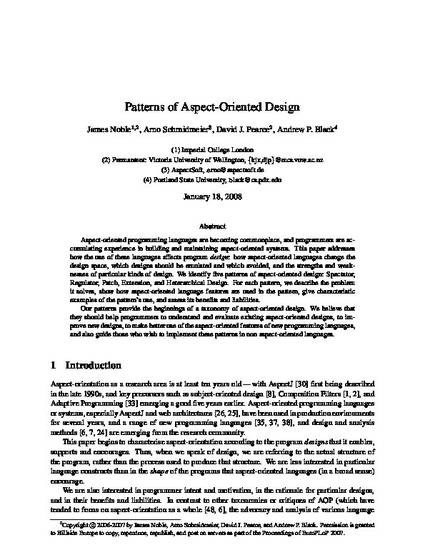
- Computer software -- Development,
- Programming languages (Electronic computers),
- Aspect-oriented software development
Aspect-oriented programming languages are becoming commonplace, and programmers are accumulating experience in building and maintaining aspect-oriented systems. This paper addresses how the use of these languages affects program design: how aspect-oriented languages change the design space, which designs should be emulated and which avoided, and the strengths and weaknesses of particular kinds of design. We identify five patterns of aspect-oriented design: Spectator, Regulator, Patch, Extension, and Heterarchical Design. For each pattern, we describe the problem it solves, show how aspect-oriented language features are used in the pattern, give characteristic examples of the pattern’s use, and assess its benefits and liabilities.
Our patterns provide the beginnings of a taxonomy of aspect-oriented design. We believe that they should help programmers to understand and evaluate existing aspect-oriented designs, to improve new designs, to make better use of the aspect-oriented features of new programming languages, and also guide those who wish to implement these patterns in non aspect-oriented languages.

This is the author's version of a paper which was subsequently published in Proceedings of EuroPLoP. 2007.